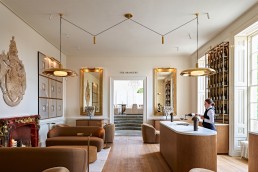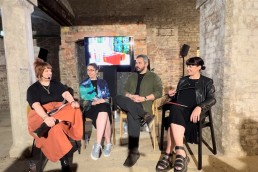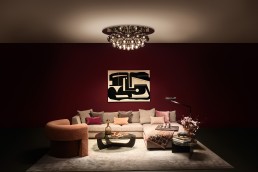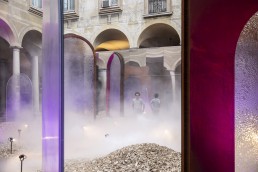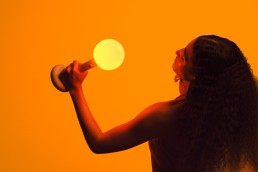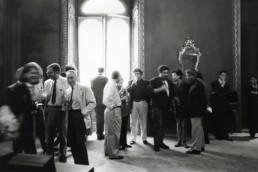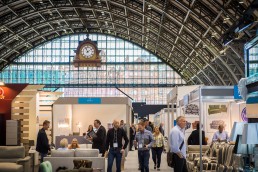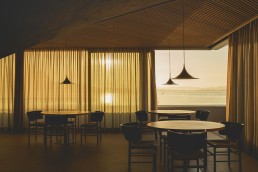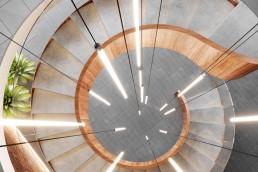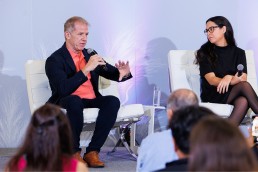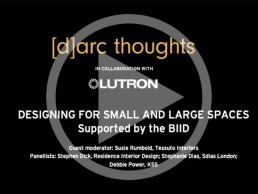RH expands into Europe
(UK)- Furniture brand RH, marks its European expansion across three countries.
The first European out-post for American luxury furnishings brand, RH England, launched last summer. Situated in a 400-year-old landmark estate designed by British architect Sir John Soane. RH England is a celebration of history, design, food, and wine. The 73 acres site holds 60 rooms, including three dining experiences: Wine Lounge, Tea Salon, Juicery, and garden. Each space integrates RH collections with rare art, antiques, and artifacts from across the globe.
The expansion continued in November with the opening of two German galleries; RH Munich and RH Düsseldorf. Located in Old Town, RH Munich is an immersive, multi-level design destination featuring luxury home furnishings in a gallery setting. Visitors can experience inspired installations of furniture, lighting, textiles, and décor by worldwide designers along with collections from RH Interiors, Contemporary, and Modern.
RH Düsseldorf features artistic installations of home furnishings in a gallery setting. Commanding four levels, this design destination features collections from RH Interiors, Contemporary and Modern by internationally renowned designers.
On 19 March RH unveiled its Brussels studio and multi-level design destination, which features artistic installations of home furnishings modelled on a restored 18th century French baroque mansion designed by architect Henri Maquet. The gallery seamlessly integrates the brand’s Interiors, Contemporary, Modern, and Outdoor collections again with rare art, antiques, and artifacts. RH Brussels also includes the RH Interior Design Studio, for clients to collaborate with its professional designers.
Both German locations also include an interactive design atelier offering professional design services.
[d]arc thoughts programme returns to Clerkenwell
(UK) – Highly regarded talks programme takes centre stage at Clerkenwell Design Week.
Curated by the editorial team behind leading decorative lighting publication darc, the [d]arc thoughts talks programme returns to Clerkenwell Design Week (CDW) for 2024, bringing three days of lighting focused content to a wider design audience.
Taking place from 21-23 May, CDW is one of the leading design festivals in the world and features more than 600 showroom events, more than 11 curated exhibitions, striking installations, topical walks, design destinations, as well as a fringe programme and more.
Covering topics such as statement lighting; quiet luxury; and the future of hospitality design, [d]arc thoughts at CDW will also see the Green Light Alliance take a closer look at sustainable lighting – aiming to provide a ‘beginners guide’ for designers who might not work closely with lighting but are keen to learn more.
Speakers for 2024 will include lighting designers from Rock & Soar; Into Lighting; Nulty+; Michael Grubb Studio; and Equation Lighting Design, while interior designers, Dara Huang of DH Liberty and OIga Alexeeva of Black & Milk will join the panel discussion on quiet luxury.
A series of Q&A sessions with interior designers Monique and Staffan Tollgard of Tollgard Design Group; Anna Burles and Chris Trotman of Run for the Hills; and Samuel Edmonds of HLW will take a closer look at project work and design trends, while Holly Hallam of DesignLSM will discuss the future of hospitality.
Alongside the talks programme, the [d]arc media team will host an informal drinks party at Clerkenwell Prison as part of the wider late-night opening on Wednesday 22 May.
Then, on Thursday 23 May – in collaboration with Women in Lighting and representatives from the ILP’s new initiative Women Lighting Professionals, Women in Office Design, and Women in Architecture, [d]arc media will host a networking brunch held in Design Fields from 11am – 12pm.
Registration and more information on the [d]arc thoughts talks programme be found at: www.clerkenwelldesignweek.com
Occhio launch new reinterpreted chandelier at Milan Design Week
(Italy) - Occhio present new chandelier, Lunanova, during Milan Design Week, equipped with latest supernova light effects of the Luna series.
Lunanova combines design and innovative technology: design chrome mirrored Luna glass spheres in various sizes and arranged concentrically on a mirrored disk. The Occhio fireball lamps float inside the spheres, providing powerful, directed light alongside Occhio’s innovative control and lighting effect possibilities to boot.
Available in three different colours, dimensions and both ceiling and suspended, Lunanova unfolds as a centrepiece for rooms with prestigious design as an interactive art installation.
Lavsit wins Fuorisalone award for Re/Creation Exhibition
(Italy) - Czech glassmaking design house, Lavsit, emerged victorious surpassing industry leaders such as Google, Zegna, Kia, and Amazon in the installation competition during Milan Design Week.
The Fuorisalone Award selects the most memorable projects showcased during Milan Design Week. More than 1000 projects presented this year with 16 making it to the shortlist chosen by an expert jury. The final decision is left to the design community, who crowned Lavsit as its winner for its creative displays and art installation, Porta.
Porta, the centrepiece of Lasvit’s exhibition, was situated at the Pilazzo Isimbardi. Designed by Lavsit’s Art Director Maxim Velcosky the installation featured 10 monumental, fused glass sculptures – with the largest measuring nearly five metres – to showcase hand craftsmanship on an industrial scale.
Velcovsky says: “I am honoured to receive this award, especially in these challenging times. Being here in Milan and experiencing the warmth of personal interactions is refreshing. In an era dominated by artificial intelligence and the expanse of the internet, I am happy the designer community appreciated the craftsmanship and innovative technology we've showcased.”
The surrounding showrooms featured in the exhibition included a new lighting design concept, Bois de Cristal, by Maria Culenova, a new collection entitled Nebula Claesson Koivisto Rune, and Jan Lecha and Henry Wieglus’ limited edition, Neverending Glory. The architecture of the show was done by Prague studio Cirque Menu.
Leon Jakimic, founder of Lasvit, adds: “Best exhibition in Milan for 2024. Out of thousands of amazing exhibitions across the whole city, where every palace, gallery, museum, and showroom become a curated exhibition. Our Art Director Maxim Velcovsky curated ours. This is a great day for Czech design and craftsmanship. I would compare it to Kolya winning an Oscar for best foreign movie in 1996, except we won this as an overall best prize, not just for ‘outside of Italy’.”
Grau - Fire
(Italy) – German-based company, Grau presents a new portable lamp fire in Milan Design Week 2024.
Named the “world’s first light player” due to its moving light compositions, users can click and dim through various settings and vibes with a motion sensor. Fire’s design encompasses a soft uncompromising light experience that channels a classic ambient table lamp.
Grau references recent scientific studies, which show that the wrong light in the evening increases the risk of mental illness by 30%. Fire offers a warm light free from blue light to enhance the production of the relaxation hormone melatonin alongside other health-promoting effects.
Equipped with ultra-fast charging, Fire charges in two hours via USB-C providing up to 50 hours of portable light and a smart LED which indicates the remaining battery.
Timon and Melchior Grau, founders of Grau, say: “Fire is the biggest milestone so far. We are launching a new kind of lighting experience and are convinced that Fire marks the start of a new era of lighting – the era of living light.”
Flos makes historic return to Pilazzo Visconti for Milan Design Week
(Italy) - Flos returns to Milan unveiling new collections in a present-meets-past installation at the Palazzo Visconti.
Set in the Baroque architecture of the 18th century building, new collections by Barber Osgerby, Formfantasma, and anniversary editions of Michael Anastassiades’ IC Lights were displayed in a three-stage journey exhibition.
The Palazzo Visconti is where 36 years ago Flos launched its first lamp designed with its first international designer, Phillipe Starck. The installation was inspired by an archival photo taken of that evening in 1988.
Taken by Maria Mulus, the monochrome image features a gathering of prestigious architects, designers, art critics and journalists, with Phillipe Stark pictured in the centre.
Barbara Corti, Flos Chief Creative Officer, explains: “That photo is Flos’ soul: its past, its present and what it wants in the future. In those smiles you can read lightness, courage to dare, a small dose of imprudence mixed with the desire to accept the designer’s responsibilities.”
The installation’s journey starts in the entrance hall on the main floor. Visitors are welcomed by an array of Emi lamps by Erwan Bouroullec leading up the staircase. It is here a short film begins, serving as a prelude to the exhibition.
The movie plays a conversation between the five designers whose work is featured at Palazzo Visconti: Michael Anastassiades with the IC 10 Anniversary, Edward Barber and Jay Osgerby with Bellhop Glass, Andrea Trimarchi, and Simone Farresin of Formafantasma with Superwire.
Making the short film involved the five designers conversing and playing games. The film crew intended to create a situation when creative people get together, representing the value of the exchange of ideas and inspirations and celebrating it as the foundation of every design gesture.
The central hall presents an immersive installation with the three new glass lighting products. A series of mirrors divide the central space in parts, each dedicated to one of the three new products: IC 10 Anniversary, Bellhop Glass, and SuperWire consequently continuous visual to the architectural decor, unlike in 1988 where Achille Castiglioni chose to block out the décor of the Palazzo’s rooms with white canvases to display his Taraxacum 88 lamp.
Flos’ intention with the installation was to rediscover the atmosphere in Mulas photo, the effective dimensions of design, being retrospective to its historical identity while interpreting it in new ways to symbolise the company’s transformative nature.
Robert Silva, CEO of Flos, says: “There is no nostalgia in the operation. On the contrary, Flos at Palazzo Visconti represents the company’s desire to always look ahead by continuing to leverage its historical identity and interpreting it in a contemporary way.
In addition to the Palazzo Visconti exhibition, Flos also presented Golden Hour, an installation by Michael Anastassiades in celebration of the IC’s 10th anniversary. The collection presents a new gold finish and maxi versions of his iconic design.
Ten years ago, IC was born to re-propose that moment of suspension in space and time. A feature that is further underlined by the new gold finish, a material chosen as synonymous with not luxury but of timelessness and of that relationship of love and respect that well-designed objects inspire, in a natural way.
Thirdly, the Flos professional showroom will be dedicated to Out of Office, an installation dedicated to the world of the office and work, to reflect on the possibilities that lighting design and well-conceived interiors offer to stimulate interaction and the development of human relationships in everyday life.
The space was transformed into an extension of the Arquitectura-G studio (also responsible for the layout of Palazzo Visconti), and furnished with worktables, chairs, and lamps from the Workmates series by Flos Architectural, a family of professional luminaires created for the world of the office, that push the boundaries of workspace illumination to new dynamics.
January Furniture Show
For over 36 years, January Furniture Show (JFS) has been the premier destination for premium furniture, lighting and homewares. Perfectly placed in the retail calendar, visitors can source high quality pieces from over 500 UK and International brands whilst connecting with the industry at multiple networking events. From our Happy Hour Champagne Bar, the Women in Furniture Network Celebrate Success event, Show Party, Social Studio and the luxury VIP Lounge in Hall 1 (provided by Show Partner Hooker Furnishings), there’s plenty of opportunities to make valuable connections and boost business in 2025.
Visitors can explore the latest launches from top names including Hooker Furnishings, Premier Housewares, Bontempi, Crystal World, Dannells Limited, Kelston House International and more! Don’t miss out and register for your FREE badge now.
To register follow www.januaryfurnitureshow.com/register
Charlie Bark-Jones
This year, the Workspace Design Show will showcase a diverse range of lighting exhibitors, ranging from Daisalux and Luxxbox's expert emergency lighting, Stoane's bespoke, statement pieces, to Synergy Creativ, which specialises in biophilic lighting, Reon’s unique wall lights, Erco’s flexible spotlights, right the way through to Ricoman's acoustic pendants. In short, we’re delighted that this year’s event really runs the gamut of commercial lighting.
We've seen a variety of lighting trends coming through this year. The emergence of sustainability as a priority in lighting will come as a surprise to no one. This year, however, it is evident there is a newfound enthusiasm for reusing products, hence the thinking behind the talk at this year’s show 'The new aesthetic of repair and re-use in lighting design: Why we need a mindset shift’. We’ve assembled an expert panel to discuss this, including Dan Lister, Associate Director, Lighting, Arup, Ruth Kelly Waskett, Project Director, Hoare Lea, Simon Fisher, Founder & Director with F Mark and Kristina Allison, Senior Lighting Designer at Atkins Global.
With the sector’s increased focus on contributing to reducing carbon emissions, lighting designers are and must increasingly be focussed on developing sustainable methods and long term solutions, ensuring products work to achieve energy-efficiency targets. Exhibitor Stoane Lighting, for example, is launching a new division called ‘ReNew’ which has been set up for just this purpose. Its products are designed so that they can easily be disassembled, have internal components replaced, upgraded and eventually parts recycled.
Our theme for this year’s Workspace Design Show theme for 2024 is ‘Bloom’, reflecting the huge increase in biophilic design in the built environment. In design terms, biophilia seeks to integrate elements of the natural world indoors, fostering a deeper connection to the natural world. This trend is exemplified by our exhibitor Synergy Creativ, which specialises in design lighting fixtures such as living walls. In this way, it incorporates greenery to promote this connection with nature, promoting wellbeing and productivity by cultivating a serene atmosphere that visually connects inhabitants with flora and fauna. We expect to see more and more biophilia-inspired lighting in the next few years as in other areas of interiors.
Statement lighting has long been an asset in the designer’s armoury. Unique and eye-catching lighting fixtures can take centre stage to wow workers back to the office – think dramatic atriums or areas where a big impact needs to be made – for example in town hall spaces or shared kitchens. Designers often focus on creating bespoke, statement pieces that not only provide illumination but also serve as artistic elements to elevate a space. Manchester-based Ricoman Lighting has created Flow Curved Linear Lighting', which allows for countless dramatic possibilities. This system consists of straight and curved basic modules, which can be combined in different ways to create unique lighting projects. The modules can also be configured to classic circular luminaires, rounded rectangles, continuous waves or even more abstract shapes. Providing even more possibilities, single or continuous luminaires can be suspended or mounted on ceilings and walls with the light directing downwards, inwards, outwards and also twisting, making this product range ideal for larger spaces as a theatrical, suspended architectural lighting configuration.
Lighting is also becoming more experiential with dynamic lighting effects such as colour gradients, motion sensors, and interactive elements able to create engaging and immersive experiences in both commercial and residential settings where the boundaries between light and art blur. Lighting fixtures can also serve as works of art themselves of course, featuring beautiful sculptural forms, and innovative use of materials to really bring out the brilliance in an interior. Lighting is also working harder than ever before with products having the ability to provide acoustic baffling or even sprinklers or M+E systems.
Human-centric lighting is also set to continue its rise in popularity into 2024. This concept involves designing lighting systems that mimic natural light patterns to positively impact human health and well-being. This includes adjusting colour temperatures throughout the day to support Circadian rhythms to suit people’s needs. At home, this means keeping the light out when you need to sleep and ensuring you let the light in when you need to wake up and stay energised. In commercial interiors, whether that’s a workplace or other commercial environment it could mean providing a range of lighting from brighter lights to warmer tones, depending on the time of day.
This fits in nicely with the idea of personalisation in lighting, another key trend set to continue. This not only includes overhead lighting but also the use of desk lamps, allowing individuals to customise the amount of light required on their individual workstations, as well as making an attractive addition to the physical desktop.
Lighting is a key product category for us here at Workspace Design Show and we look forward to visitors exploring the thriving ecosystem of work life, including lighting up offices in a multitude of ways.
Cantabrian Maritime Museum
Architectural studio Zooco has transformed the hospitality venues inside the Cantabrian Maritime Museum, creating an elegantly simple destination that celebrates the building’s original architecture.
The Cantabrian Maritime Museum, Spain, was conceived as part of an architectural complex together with the Oceanographic Center, designed by Vicente Roig Forner and Ángel Hernández Morales and built between 1975 and 1978.
The original building consists of two square bodies connected by a canopy, with a concrete structure. The interior is distributed over three floors around a central courtyard covered by a vault of paraboloid membranes. In 2003, a renovation and extension was carried out, which included the extension of the west façade and the roof of the terrace with a pyramidal aluminium structure, thus altering the initial conception of the building.
Madrid-based architectural studio Zooco was brought on board initially to rectify issues of dampness in the roof and façade of the building. This later developed into the team designing and creating a new space of the museum on the second floor, which houses its restaurant and terrace.
When describing their involvement in the project, Miguel Crespo Picot and Javier Guzmán Benito, two of the three founders of Zooco, explained how fortunate they were that the client granted them complete freedom when it came to shaping the design of the restaurant.
“Throughout the duration of the project, the integrity of the design remained unaltered, preserving its originality and functionality without undergoing any changes.”
The geometric properties of the space helped define the approach to the restaurant’s interiors. The square morphology of the restaurant’s volume is the result of four additional triangles that regularise and complete the concrete paraboloids of the original building.
“The original building had a terrace on the third floor, where the concrete structure was completely outside and functioned as the roof of the museum’s central patio. In 2003 the building was renovated and within this intervention, the paraboloids were covered with a new roof and the space between them, and the perimeter of the building was closed with glass, generating a covered space where there was previously a terrace. From the outside, the original cover can no longer be seen, and from the inside it is covered by paint or coating,” explain the two founders.
“Our intervention focused on recovering the original essence of this significant construction element. To do this, the coating and paint were removed, and the inclined green glass was replaced with vertical transparent glass. In this way, the paraboloids appear in their pure state and a perimeter terrace is recovered along the entire space.
“The geometry of the existing structure conditions the space, because its height in its lower part is impractical, so a large bench was arranged around the entire contour that allowed us to take advantage of that space and organise the distribution of the rest of the floor plan.
“We wanted the concrete paraboloids to be the absolute protagonists of the space. To do this, we looked for a floor finish that was as neutral as possible, that adapted to the existing conditions and did not compete with the main element of the project.
“To enhance the original structure, we decided to use a wooden roof that framed the perimeter of the paraboloids. The wooden slats bring warmth and friendliness to the space, while allowing us to solve all the technical needs for air conditioning, heating, and lighting, leaving them hidden. In this way we ensured that all these elements did not interfere with the dialogue of concrete and wood, which were presented as continuous and clean elements.
“This geometry became a recovered element, a vestige of the past, and the protagonist of the restaurant’s interior. Treated as an artistic element, the triangular wooden false ceilings frame it.
The museum’s location also played a key role in the design strategy for Zooco. “We could say that it influences 100%,” says Guzmán Benito. “We are at the Cantabrian Maritime Museum, a museum dedicated to the sea, which is practically on top of the water. When we are inside, the feeling is the same as when we are inside a boat, there is only water around, and that is why we used clean glass from floor to ceiling, generating a perimeter terrace as if you were on a boat.”
“The use of wood and steel for all the furniture is reminiscent of the materials used in ship building,” continues Crespo Picot. “The wood is arranged in small boards just as it is used in the hulls of boats and the furniture has slight curvatures that are reminiscent of the aerodynamic shapes of boats. Likewise, the lamps are inspired by the masts for ship sails.
“The dialogue between the concrete container in grey tones, on the one hand, and the glass envelope that allows a total visual connection with the outside, generates great spatial harmony. Everything is completed and harmonised with all the oak wood furniture and stainless steel accessories.”
The role of decorative lighting was integral to achieving the minimalist aesthetic the team were working towards for the dining area. Along with fixtures from Arkoslight, Menu and Gubi, Zooco also created a custom piece called the MMC Lamp.
“The concept behind the design of the MMC lamps stemmed from a specific necessity – the quest for a lighting solution that seamlessly emerged from the table surface, eliminating the need to suspend it from paraboloids,” explains Crespo Picot. “This innovative approach aimed to preserve the integrity of the concrete structure, ensuring a harmonious blend of functionality and aesthetics. In addressing this challenge, the lamps were meticulously crafted to not only fulfil their illuminating purpose but also to become an integral part of the architectural composition.”
Discussing the various considerations for lighting placement, Guzmán Benito says: “First, in this luminous spectrum are the suspended fixtures, gracefully poised from the ceilings adorned with wooden slats. Second, the MMC Lamps that emerge from the table, and thirdly the recessed spotlights, which are strategically placed to illuminate pairs of tables, creating intimate pockets of radiance.
“[Decorative lighting is] as important as any main element of the design. The luminaires, in their varied forms, become not merely sources of light but protagonists in the narrative of design, illuminating not just spaces but also the nuanced interplay between permanence and flexibility, aesthetics and functionality.”
When asked how this project differed to others in Zooco’s portfolio, Guzmán Benito explains that the task of rehabilitating the existing concrete structure was a point of difference for them. “This challenge added layers of complexity to the process, requiring a meticulous approach to preserve and strengthen the structural integrity while undergoing rehabilitation.
“Zooco designs everything. Our philosophy consists of approaching any type of assignment, regardless of its scale, budget, and programme, with the same attitude and creative ambition. Applying the same process searching the most appropriate and valuable solution, both from an artistic and functional point of view.”
In Focus - Lysabel Lorenzo Truant intra lighting
Designer Lorenzo Traunt discusses his pendant light, Lysbel, for intra light.
What is the design concept behind Lysabel?
Lysabel was born as a straight line, hypothetically infinite, radiating its light 360°. The primal idea of Lysabel originated from the beautiful images of laser sabre battles in well-known science fiction movies. The whole project was illustrated through compelling images, reminiscent of the epic saga, with numerous characters wielding the lamp attached to the power cord. For example, the robotic multi-armed Grievous from Star Wars (who wielded four lasers) lent itself to being associated with the adjustable multi-armed Lysabel chandelier or the “en guard” position of one of the knights approaching the floor lamp.
The collection grew with the thought of light like a gash in the darkness, like a weapon to be wielded in a dark space to illuminate it, like a battle between opposing entities such as light and darkness.
How long have you been working on the collection?
The Lysabel collection was born in 2019 and developed over a few months with increasingly elaborate concept sketches and an initial 3D-engineered design equipped with all the essential components. In 2020, it was sent to Intra lighting, with the first prototypes unveiled in 2022.
What was the most challenging aspect of this project?
Managing the uniformity of light along the light rod. In my initial drawings, I identified both a 360° spread and a predominance of light on one side, without compensating for the opposite side. The hypothesis could only be checked in the prototyping phase, thanks to the photogoniometer provided by Intra. This device allowed us to assess optimal light diffusion with precise data, without bothering the view.
Another challenge involved designing the connection between the light rod and the power cord. The detail borrowed from the particulars of irons has been simplified and embellished. This detail personalises the lamp and makes it ready to become a horizontal, vertical or tilted element as desired.
What materials and design processes are used?
The basic materials are aluminium and acrylic glass (PMMA), both of which are 100% recyclable. The profile of the acrylic glass is obtained by an extrusion process that easily allows for varying lamp lengths and improves production by optimising it in terms of assembly time and production adjustment. High-quality LED strips can be cut to size, allowing for high production flexibility. The light sources have high-quality parwww.intra-lighting.comameters: Hi flux LED strip, CRI>90, MacAdam<2, and with a wide range of colour temperatures: 2700K, 3000K, 3500K, 4000K. The design process begins with imaginative assumptions. These ideas converge into thoughtful formal choices that undergo verification in the engineering and prototyping phase. Subsequently, they are further examined in the photometric results, utilising tools such as the photogoniometer. This meticulous approach aims to achieve optimal functionality and manageability.
What technologies are used?
The frosted opalescent acrylic glass tubes are extruded by calculating the exact coverage of the opalescent compound so that the light is diffused evenly without the bright dots of the LEDs being visible, but without the diffuser finish being able to cover too much of the light emission. The aluminum body, including the ball joint and all visible metal details, is offered with a choice of finishes: gold, onyx, and bronze in coated or brushed variants. The components are of high quality, and the ballast operates at 24V, maintaining a constant voltage. The light source consists of long flexible webbing that can be cut at will, carrying on board numerous LEDs juxtaposed one to the other and electrically connected.
Despite its slender appearance suggesting fragility, the collection is surprisingly resilient and manageable.
Hotel & Resort Design South
Hotel & Resort Design South (HRDS) caters exclusively to those involved in the design of world-class hotels and resorts across the South and Latin America.
Dedicated to connection and collaboration, HRDS invites attendees to experience the distinct design styles and trends emerging from the South, Caribbean, and LATAM hotel, resort, and private island destination market.
The conference and exhibition will feature an educational schedule of content focused on the latest projects, trends, and topics flourishing in this vibrant region and a marketplace of products and services from over 300 exhibitors.
Attendees will also benefit from attending a variety of tailored networking opportunities and social events across the two days, as well as the co-located cruise interior design event - CSI Design Expo Americas.
Attending brands include Accor, Marriott International, Hilton Hotels & Resorts, IHG Hotels & Resorts, and more.
Register for your free pass today and be part of the HRDS experience on 6 - 7 June in Miami.
HRDS takes place on Thursday 6 to Friday 7 June 2024 at Miami Beach Convention Center, 1901 Convention Center Drive, Miami beach, FL 33139, USA.
Designing for Small and Large Spaces supported by the BIID
An expert panel brings a wealth of experience, from stadiums to five star hotels, from homes in the UK to homes overseas. Join them as they discuss lighting spaces big and small from the perspective of an interior designer.

